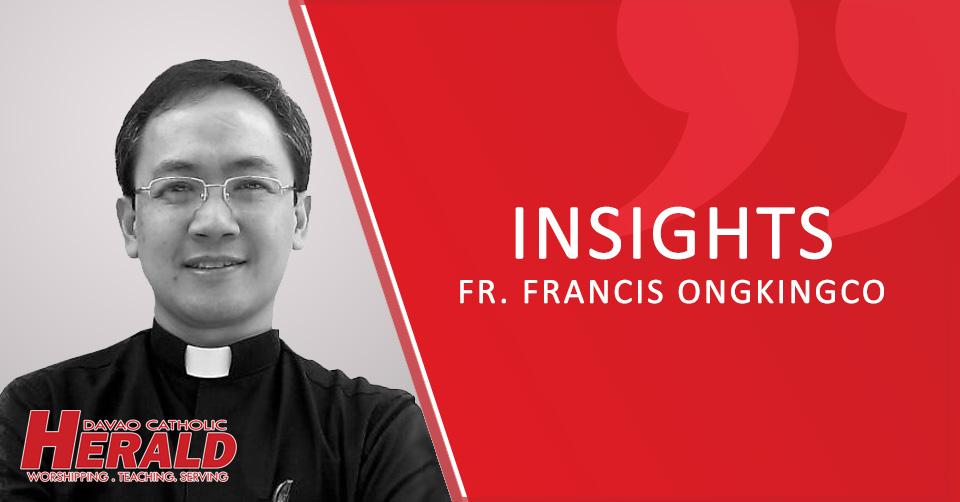
Culture of confinement
With the experience of almost three months of confinement, most of us would have adjusted to a ‘new normal’ way of life: constantly masking, distancing and sanitizing ourselves as our primary line of defense against COVID-19. Our experience of anxiety, uncertainty and fear has been somewhat replaced with restlessness, “rantiness” and resignation. But as always, we have managed to adjust and even come out as improved versions of ourselves in countless ways.
Even before the present pandemic, however, humanity has already experienced countless trials. These ushered man beyond the thresholds of his normal capacity and come out, perhaps not always alive, but as a testimony of how ‘external pressures’ can forge our nature’s raw material into something spiritually uplifting.
I’m not speaking of plagues or diseases, but of circumstances that have been the result of the abuse of human freedom and the very rejection of the innate dignity in every man and woman of being God’s image and likeness.
These have come in the form of racial wars, religious persecutions and in our times the vicious ideological philosophies threatening to neutralize the family and marriage. These continue to plague the world and society, and it seems –even with COVID– carry on with greater force.
But there were also instances when without any external threats that individuals choose to confine themselves freely. It is through such choices that they are able to free themselves from the unseen enemies of the soul, that constantly endanger man from attaining his true end, Heaven.
What follows is the example of some individuals, selected without any special criteria or theme, who became ‘victors’ rather than victims of war and persecution. The others, are examples of self-confinement via the religious life.
- Esther “Etty” Hillesum (15 January 1914 – 30 November 1943). A Dutch author who was deported and killed in Auschwitz. It was during imprisonment that she discovered a new and greater form of freedom. While in the camp of Westerbork, she writes: “Those two months behind barbed wire have been the two richest and most intense months of my life, in which my highest values were so deeply confirmed.” (“Etty Hillesum,” n.d., para. 8)
- Anne Frank (12 June 1929 – February or March 1945). Well known for her Diary, this little Dutch girl was confined behind a bookcase that concealed some rooms. From July 1942 the Franks started hiding in this secret place until they were discovered and deported to Auschwitz in 1944. It was during these two years that Annelies Marie wrote her memories that later on would be one of the most widely read books in history.
- Victor Frankl (26 March 1905 – 2 September 1997). An Austrian neurologist and psychiatrist who survived the Holocaust. While imprisoned in Theresienstadt, Victor saw deeper into his ordeal and even helped many of his co-prisoners to find meaning within the inhuman walls of prison. His experience and reflections would lead to his best-selling work, Man’s Search for Meaning.
- François Xavier Cardinal Nguyễn Văn Thuận (April 1928 – 16 September 2002). Ordained to the priesthood at 25 1953. In 1967 he became the Bishop of Nha Trang. In 1975, six days after being appointed as Coadjutor Archbishop of Saigon, he was detained by the communist. Imprisoned for thirteen years, nine in solitary confinement. Released (under house arrest) in November 1988 and in 1991 exiled to Rome. His memories are found in his book TheRoad of Hope, which describes his enduring testimony faith, hope and forgiveness. On May 4, 2017, Pope Francis declared him Venerable, an important step towards sainthood.
- Thérèse of Lisieux (2 January 1873 – 30 September 1897). An all-time favorite saint who at the early age of fifteen entered the Carmelite community of Lisieux. She only spent nine years and eighteen months in Carmel where she died at the age of twenty-four from tuberculosis. In this brief period, she opened for the Church and countless souls her “little way” which would be forever a spiritual oasis found in her diary, The Story of a Soul.
- Thomas Merton (January 31, 1915 – December 10, 1968). Prior to joining the Trappist monks Merton had lived a full life searching for the purpose of his life. Later on, he found the answer with his conversion to Catholicism in 1938. In 1941 he joined Cistercians of the Strict Observance in the Abbey of Gethsemani, Kentucky. It would take some time before Merton would fully adjust to this new calling. Prayer, reflection and study would later on produce his most influential work: The Seven Storey Mountain. This would make countless World War II veterans flock to monasteries across the U.S.
Whether under imposed and self-imposed confinement, these individuals revealed what the human spirit is cable of achieving and contributing to humanity. Thus, we must also ask ourselves if our own confinement is oriented towards the greater and deeper aspirations, sown by God in our hearts, which are meant to be discovered and nurtured during our COVID confinement.


No Comments